Every week I’ll provide updates on the latest trends in cloud software companies. Follow along to stay up to date!
Rubrik IPO Update
This week Rubrik launched their IPO with an initial pricing range of $28 - $31 / share. This range represents roughly a $6B valuation at the midpoint ($29.50 / share), with a ~6.5x NTM revenue multiple. Their GAAP revenue grew 5% in 2023, and 29% in Q4 ‘23 YoY. There is some noise in the revenue growth figures as the company transitions from selling perpetual licenses to to recurring subscriptions, and as they convert maintenance customers to subscription customers (they do this as maintenance contracts come up for renewal, so the transition happens gradually).
Rubrik’s subscription ARR was $784m at the end of 2023 and growing 47% YoY. For context, full year GAAP revenue in 2023 was $628m. I lay out all of these numbers to hopefully portray that the business is growing much faster than the 5% 2023 revenue growth would suggest. The right way to view Rubrik is really more of a high growth software business growing >40%. Also - while they are not FCF positive, their LTM FCF margins were only (4%)
Most IPOs set an initial range with the hopes of raising the range as they start meeting with prospective IPO investors. All of that being said - the initial range the company set implies a 6.5x NTM revenue multiple for a business growing >40% (at significant scale) that is operating at roughly breakeven. A sobering figure for private unicorn companies considering going public who are growing slower / less profitably.
The table below lays out a few stats at different share prices. I’ll update this table if / when they update the pricing range. Also a good reminder that IPOs are typically an event that dilutes existing shareholders ~10%. The dilution comes from new shares that are issued (company raises cash).
Top 10 EV / NTM Revenue Multiples
Top 10 Weekly Share Price Movement
Update on Multiples
SaaS businesses are generally valued on a multiple of their revenue - in most cases the projected revenue for the next 12 months. Revenue multiples are a shorthand valuation framework. Given most software companies are not profitable, or not generating meaningful FCF, it’s the only metric to compare the entire industry against. Even a DCF is riddled with long term assumptions. The promise of SaaS is that growth in the early years leads to profits in the mature years. Multiples shown below are calculated by taking the Enterprise Value (market cap + debt - cash) / NTM revenue.
Overall Stats:
Overall Median: 5.7x
Top 5 Median: 16.3x
10Y: 4.6%
Bucketed by Growth. In the buckets below I consider high growth >27% projected NTM growth (I had to update this, as there’s only 1 company projected to grow >30% after this quarter’s earnings), mid growth 15%-27% and low growth <15%
High Growth Median: 8.6x
Mid Growth Median: 8.2x
Low Growth Median: 4.0x
EV / NTM Rev / NTM Growth
The below chart shows the EV / NTM revenue multiple divided by NTM consensus growth expectations. So a company trading at 20x NTM revenue that is projected to grow 100% would be trading at 0.2x. The goal of this graph is to show how relatively cheap / expensive each stock is relative to their growth expectations
EV / NTM FCF
The line chart shows the median of all companies with a FCF multiple >0x and <100x. I created this subset to show companies where FCF is a relevant valuation metric.
Companies with negative NTM FCF are not listed on the chart
Scatter Plot of EV / NTM Rev Multiple vs NTM Rev Growth
How correlated is growth to valuation multiple?
Operating Metrics
Median NTM growth rate: 13%
Median LTM growth rate: 17%
Median Gross Margin: 75%
Median Operating Margin (11%)
Median FCF Margin: 11%
Median Net Retention: 110%
Median CAC Payback: 39 months
Median S&M % Revenue: 41%
Median R&D % Revenue: 25%
Median G&A % Revenue: 16%
Comps Output
Rule of 40 shows rev growth + FCF margin (both LTM and NTM for growth + margins). FCF calculated as Cash Flow from Operations - Capital Expenditures
GM Adjusted Payback is calculated as: (Previous Q S&M) / (Net New ARR in Q x Gross Margin) x 12 . It shows the number of months it takes for a SaaS business to payback their fully burdened CAC on a gross profit basis. Most public companies don’t report net new ARR, so I’m taking an implied ARR metric (quarterly subscription revenue x 4). Net new ARR is simply the ARR of the current quarter, minus the ARR of the previous quarter. Companies that do not disclose subscription rev have been left out of the analysis and are listed as NA.
Sources used in this post include Bloomberg, Pitchbook and company filings
The information presented in this newsletter is the opinion of the author and does not necessarily reflect the view of any other person or entity, including Altimeter Capital Management, LP ("Altimeter"). The information provided is believed to be from reliable sources but no liability is accepted for any inaccuracies. This is for information purposes and should not be construed as an investment recommendation. Past performance is no guarantee of future performance. Altimeter is an investment adviser registered with the U.S. Securities and Exchange Commission. Registration does not imply a certain level of skill or training.
This post and the information presented are intended for informational purposes only. The views expressed herein are the author’s alone and do not constitute an offer to sell, or a recommendation to purchase, or a solicitation of an offer to buy, any security, nor a recommendation for any investment product or service. While certain information contained herein has been obtained from sources believed to be reliable, neither the author nor any of his employers or their affiliates have independently verified this information, and its accuracy and completeness cannot be guaranteed. Accordingly, no representation or warranty, express or implied, is made as to, and no reliance should be placed on, the fairness, accuracy, timeliness or completeness of this information. The author and all employers and their affiliated persons assume no liability for this information and no obligation to update the information or analysis contained herein in the future.

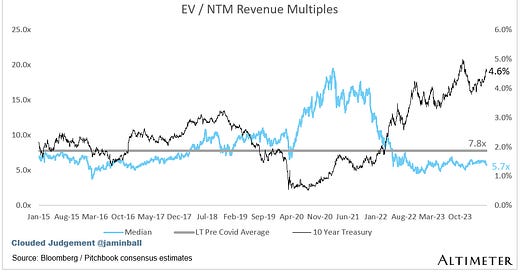



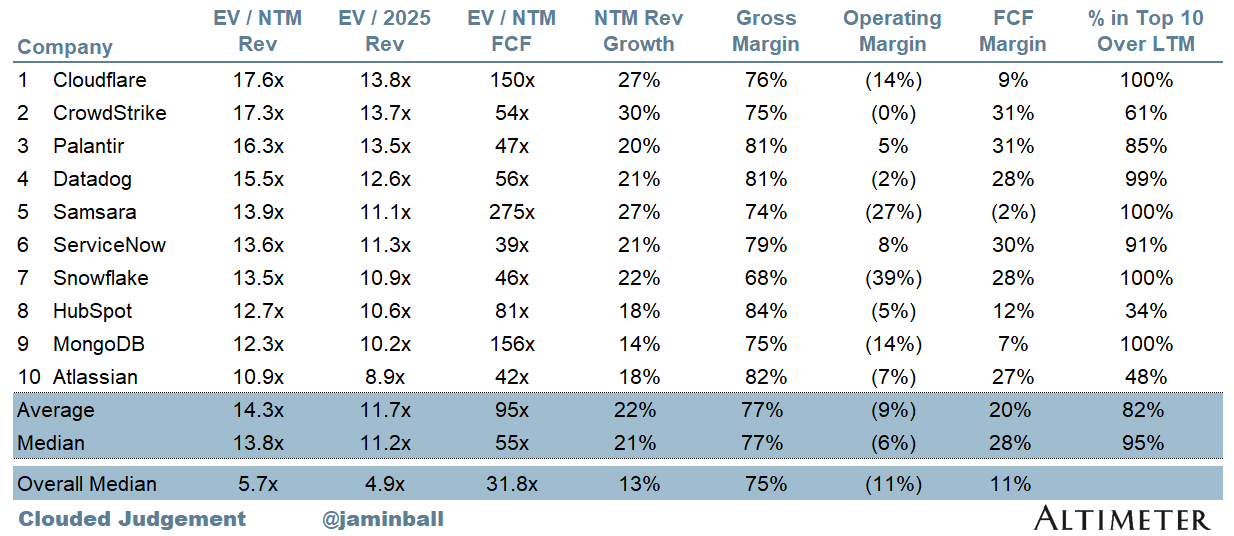
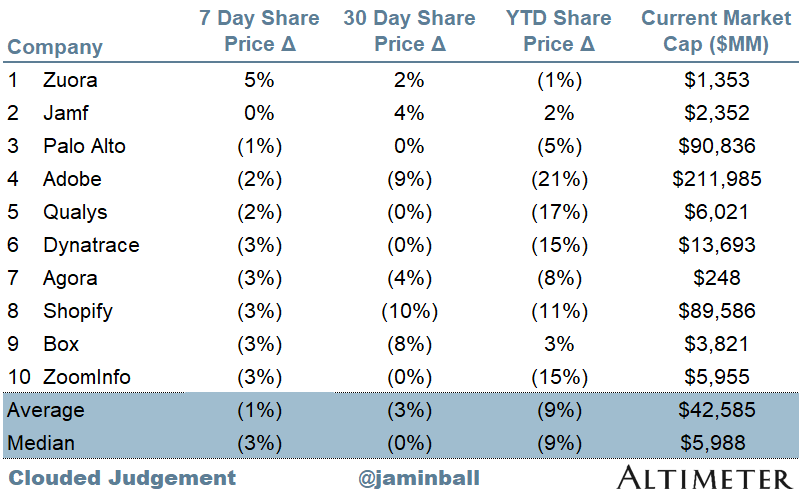



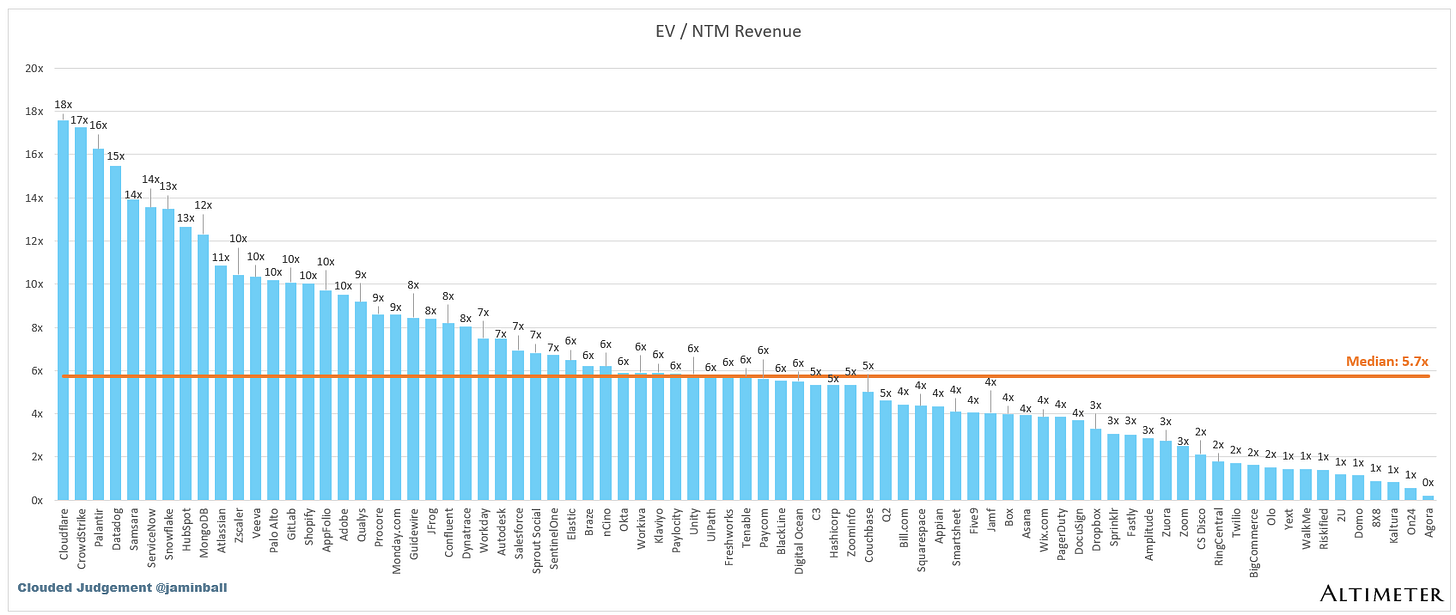
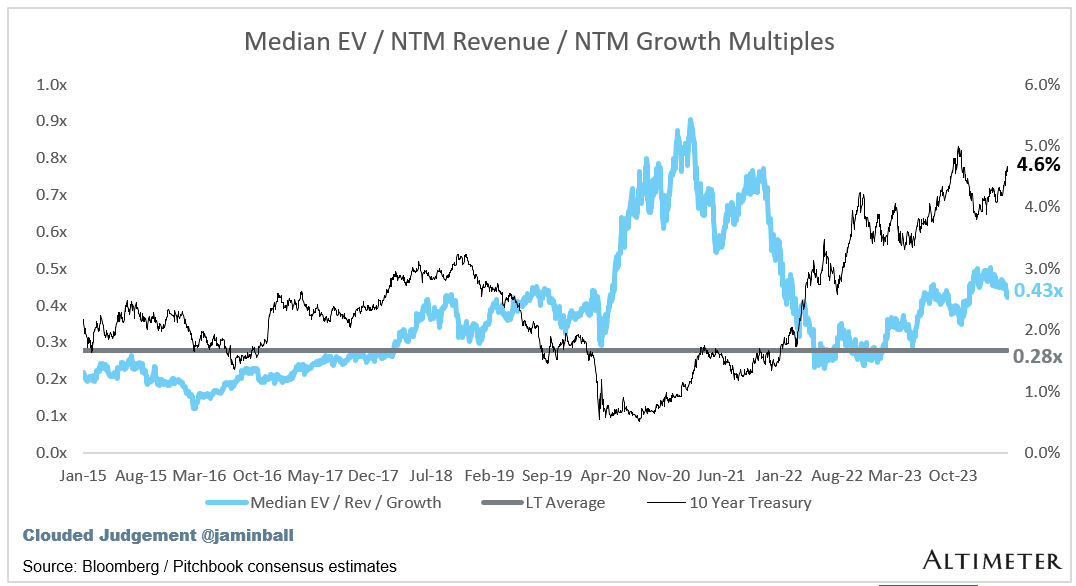


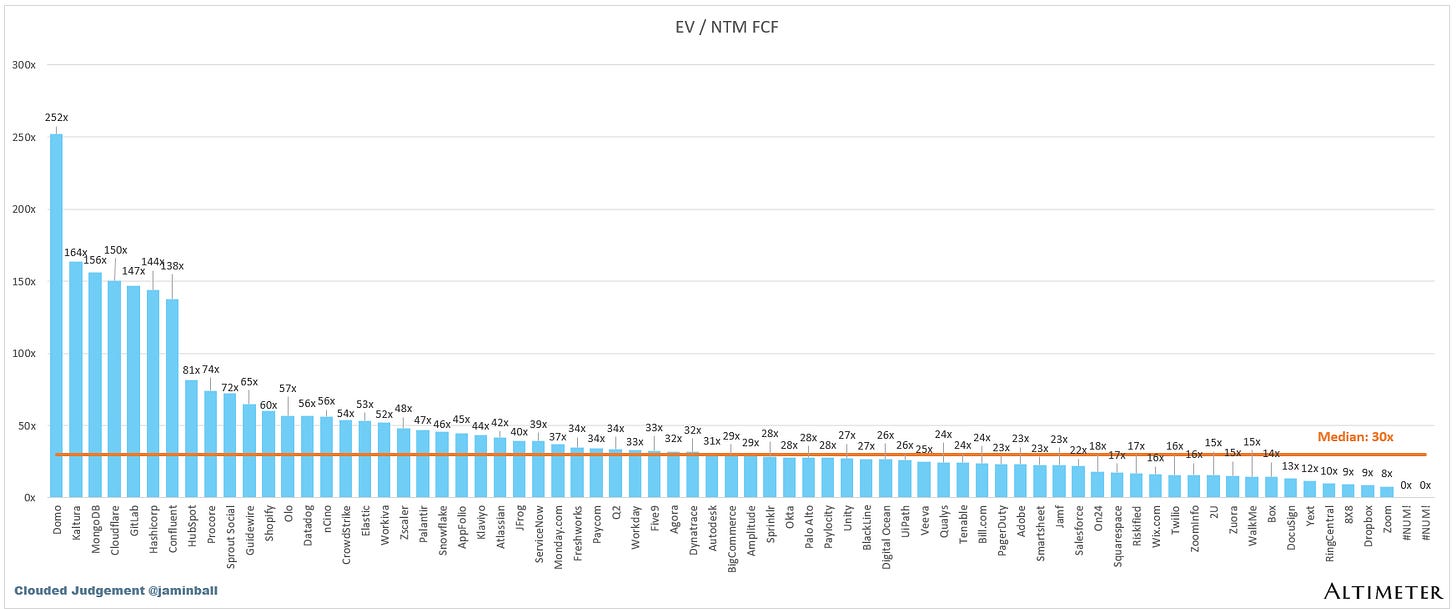




Given the >40% ARR growth, why is Rubrik's multiple of 6.5x NTM revenue not follow the high growth companies of >8x?
Glad to see the steady trickle of tech IPOs. I hope it becomes a larger consistent flow because it is, imo, healthy for capital markets. As a retail investor, I would rather that startups go public than stay private.
One observation about your Top 10 EV / NTM Revenue Multiples table. Looking at the top 4 companies - NET, CRWD, PLTR, DDOG. I wonder if, after the recent rerating in tech companies, we could now consider these companies to be the cream of the crop. Meaning, investors are willing to pay up a little higher for these companies versus others lower in the table. Just a thesis that I am considering...Cheers!